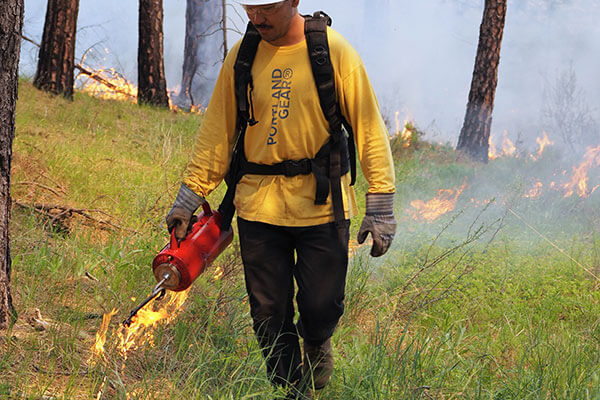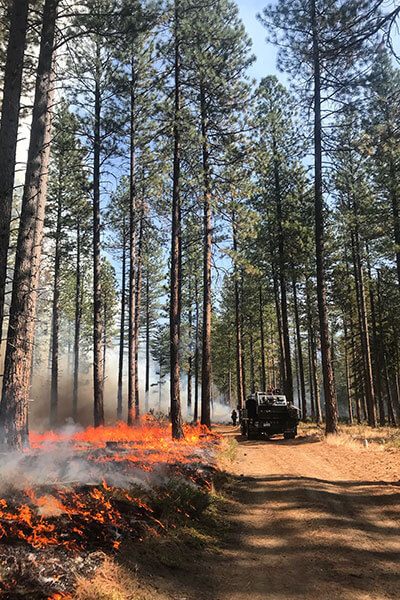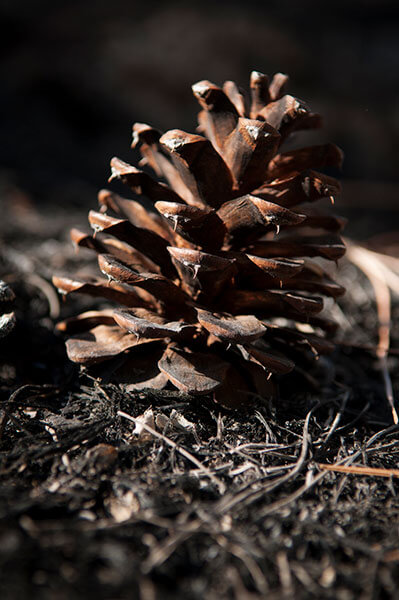Fire has had a place across North America for thousands of years, and Washington state is no different. While lightning caused fires did and do occur, indigenous people also used fire to shape the landscape and provide food and resources. These frequent fires helped keep fire risk low and supported healthy and resilient ecosystems.
The removal of fire and over a century of fire suppression policies dramatically altered these fire-adapted ecosystems. Without fire, the density of trees, brush, and other flammable fuel increases over time, creating hazardous conditions where fires would burn up to tree canopies, devastating forests. Paired with changing climate conditions that are creating longer fire seasons, wildfires have become more destructive, both for communities and forests.

Fire can be beneficial for people and the land.
The paradox of fire in many of our ecosystems in Washington, particularly our dry forests in eastern Washington, is that less fire has created worse fire outcomes.
Bringing prescribed fire and other types of beneficial fire back, such as cultural burning, intentionally reintroduces fire in our forests, grasslands, and other ecosystems. This reduces the density of fuels that are contributing to severe wildfire and returns an essential ecosystem function that supports healthy soils, watersheds, plant communities, and wildlife.

While prescribed fire is one of our most effective tools, there are many barriers that make it challenging to implement. Many common barriers include a lack of knowledge, experience, training, equipment, and resources.
There are organizations like the Washington Prescribed Fire Council that are working to address these barriers at a state-wide level and support burners across the state.
Prescribed Burn Associations (PBAs) work locally. By working together, members of a PBAs are able to overcome many of these barriers by providing training and education, pooling equipment and resources, and connecting people and ideas.
